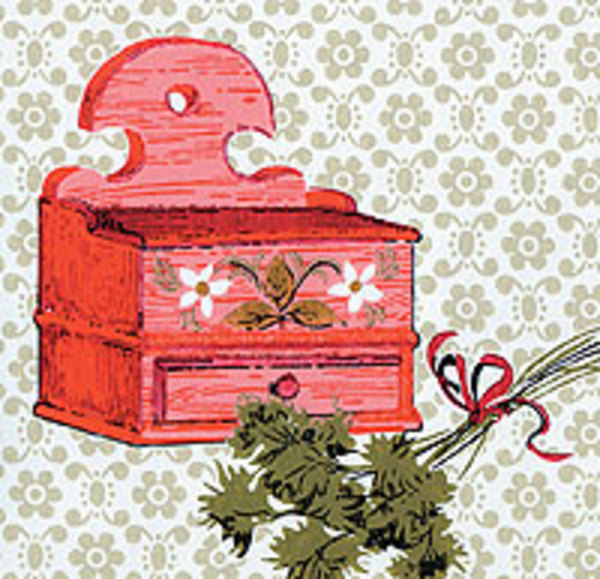At a family gathering last year, I asked one of my nieces what she thought of our old house. Just turning five years of age, she was visiting our work-in-progress 1890s Queen Anne for the first time, but that didn’t stop her from offering a prompt and mordant opinion. “Well,” she pronounced with the conviction of a hanging judge, “you should take the floor off the ceiling!” I agreed we probably should.

What she was referring to, with the perception of a preschooler, was the grid of acoustic tiles plastered wall-to-wall across the top of our kitchen. Probably the legacy of a 1950s remodeling, they looked a lot more like flooring than the photo-printed red-brick surface we were walking on—especially from 28″ off the ground. In fact, there are a lot of features in our kitchen that seem like they’re in the wrong place at best, in the wrong century at worst. That make-believe brickwork, for example, runs right up to the back of an original chimney. The flue is defunct, but the brick is very real and a jarringly different pattern than the floor.
Then there are the kitchen cabinets, also of the Elvis era and built of knotty pine. This is the grade of lumber marketed half a century ago to evoke 1700s craftsmanship, despite the fact that most colonial carpenters had both the resources and sense to build interior finishes with clear pine, purposely free of knots and their stains. The cabinet handles and hinges are all black mock-forged hardware, the kind peppered with impossibly small hammer marks. (They remind me of those canned stews full of miniature burgers cooked on what must be Lilliputian grills.) Though an anachronism, the stainless steel of the sink and counter is genuinely hammered with the dings and scratches of decades of food preparation. Just in case the Early American motif doesn’t come through loud and clear, all these materials swim in a wallpaper backdrop of spinning wheels, coffee jars, and spice boxes that repeat the hues of brick and pine with all the subtlety of a fire engine.
We bought our Queen Anne as soon as we spied it, and we suspect everyone earlier had passed it up because they eventually saw The Kitchen. In a market where words like “updated” and “turn-key” are what sell, this maelstrom of kitchen kitsch was no doubt simply “dated” and “turn-off.” Too busy since then to focus on what might be better, we’ve mentioned to one restoration contractor friend that the kitchen may go someday. “Don’t chuck the cabinets,” came the instant reply, “I know folks with a ranch house who need them!” Do tell? “Sounds awesome,” reported a historical architect in Manhattan. “They get big bucks for 1950s here!” Hmmm. Maybe an 1890s house full of eclectic furniture (and hitched to a 1918 addition) can also embrace a Baloneyial Revival kitchen. Maybe the floor stays on the ceiling after all.







